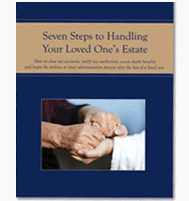Avoiding Trouble When Subletting
In my practice, the majority of subletting situations I see involve commercial leases. Many residential landlords forbid subletting altogether, and commercial leases tend to be for longer periods of time, so commercial leases see more sublets.
Why sublet? It’s all about flexibility. Maybe you expect your business to expand, so you want a space that’s big enough but don’t want to pay for the part you don’t need right now. Or maybe you’ve encountered a setback, and want to cut your expenses for a period of time while you regroup. Sometimes, subleases are even a way to transition to a new owner when selling a business.
Whatever the reason, all subleases have three parties: the Landlord, who is the owner of the property, the Master Tenant, who is renting property from the Landlord, and the Subtenant, who is renting all or part of the Master Tenant’s property from the Master Tenant. The Master Tenant is also sometimes referred to as the Sublessor, from the Subtenant’s perspective.
Every sublease starts with a review of the master lease (the agreement between the Landlord and Master Tenant). The terms of the master lease will control whether, and to what extent, a sublease is allowed.
Most typically, in commercial leases, subleases are allowed, but the wording is sort of in reverse. It says that subleases are not allowed unless the Landlord gives permission, but that the Landlord can’t “unreasonably” withhold that permission. If you follow that logic, it means that a reasonable sublease pretty much has to be approved, but it does ensure that the Landlord knows what is going on and has a chance to approve or request changes.
Subleases are also subject to the other terms of the lease. As an obvious example, if you have a lease for five years, you can’t sublease beyond the end of that five-year period. And the other terms of the master lease will apply, either directly or indirectly, to the subtenant as well, so it’s important if you’re a subtenant to know what those terms of the master lease are. (Some terms, like the rent paid, may not be shared with you, of course.)
Since a sublease is generally a three-way negotiation, it can become pretty complicated. However, with proper planning, a sublease can provide benefits to all three parties.

 Comments (2)
Comments (2)





I have sublet an apt. The leasor has agreed to a certain time and amount. Now she wants to charge double for the last two weeks. I have in an email she let the leasing office know she was subleasing when in fact she did not. What are my rights?
Your tenant rights will depend on what state you are in. If you’re in the Bay Area, you can call my office to set up an initial meeting to discuss your options.